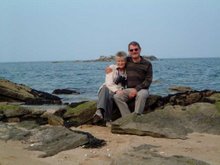We’re at the ruins of Troy by 8:30 am opening time. Troy was
thought to have been a mythical invention existing in the literary works of
Homer and Virgil. However, in 1871 amateur archaeologist Heinrich Schliemann
got permission to dig here in the belief that he had found the site.
In the years since, with a lot more archaeological
investigation, it’s been established that Troy consists of 9 different time
layers, the oldest being dated to 3,600 BC. These are mud bricks from that
first layer.
These are the early defensive walls from layer 1 or 2
But it’s the Helen of Troy era, the Greek legend, that we’ve
all come to see, in layer 6 or 7. This photo next is claimed to be part of king
Priam’s Palace. When the Greeks sacked Troy, having gained entry by the wooden
horse ruse, Priam was killed by the son of Achilles. Schliemann further ravaged
Troy by making off with Priam’s treasure, which was then exhibited in Berlin
until captured by the Russians in 1945. Today it’s on display in St Petersburg
where its ownership is disputed by both Germany and Turkey.
This was Troy’s harbour. The sea in those times covered the
flat green area just beyond the trees.
A wooden walkway threads through the ruins and Info boards in
Turkish and English describe the various points of interest. This is the
walkway running along the later and sturdier walls of the city.
The final level was the Roman occupation, and here’s a small
Roman amphitheatre where plays would have been performed.
Finally, in the car
park, is a replica wooden horse. There’s no exact description from Homer or
Virgil, even if there was in fact one at all, so it’s
whatever wooden horse you want to imagine. Tour guide Ali in the red jacket is
seen leaning on one of its front legs imagining it's lunchtime I would guess.
Unlike most of the tour group, we resisted the temptation to
buy a souvenir wooden horse from the gift shop.
On the way to the day’s final antiquities site, Pergamon, we
call in to the village of Bergama for a pre-arranged village lunch: we split
into groups of about 6 people that then go to individual houses. It’s a unique
experience.
We’re not far from Pergamon, which is on top of a steep
hill. The bus decants us by the cable-cars, reassuringly described by Ali as
“Swiss-made”.
We’ve still got a steep enough final climb from the
cable-car station, but seeing the ruins ahead spurs us on.
It’s fairly flat on the top with an open area and some
columns remaining which, I think, was the temple of Athena. We have to enter
the main city through the narrow portal you see on the photo underneath.
Here’s the entrance tunnel, built with effective defence in mind.
Through the tunnel, we can see the impressive hillside
amphitheatre with a capacity of 10,000 plus. It’s also one of the steepest
theatres in the ancient world, so good views of the performance but you don’t
let go of your hat or ice-cream.
The city’s origins are obscure, around 800 BC is a best
guess. It came to prominence under Alexander the Great’s general Lysimachus in
the 3rd century BC.
This next photo is of the remains of the library that was
founded in the 2nd century BC, and was believed to be the second
largest library after Alexandria in Egypt, with 200,000 papyrus scrolls.
The papyrus raw material came from Egypt, and the story is
that the Pharaoh Ptolemy V came to see Pergamon’s library as a rival to
Alexandria’s and so wouldn’t supply any more papyrus. But Pergamon revived the
skill of producing parchment from animal skins for script. Parchment, unlike
papyrus, could be made into books and is very durable. There is even a modern
day pastime called pergamano which involves writing on and embossing parchment.
The elegant columns are beautifully decorated.
I’d not heard of Pergamon before this visit. It's a privilege to view and appreciate the skill and craftsmanship in all these ancient cities that have survived through the centuries. I wonder if our age will leave such artistic
wonders for future generations.


















































